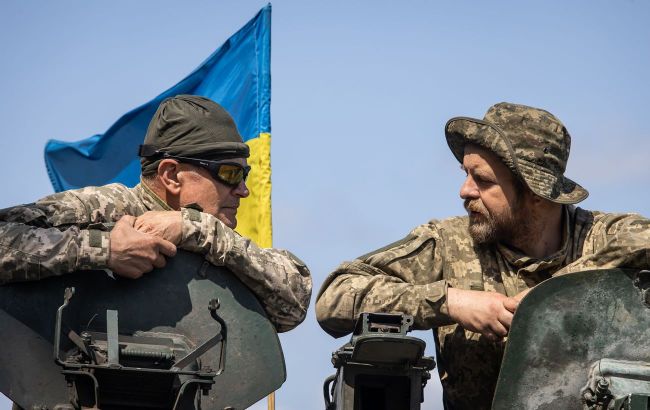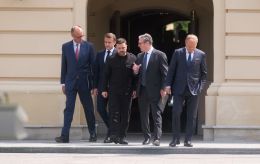Counteroffensive in the South becomes a priority, but it won't be rapid
 Counteroffensive by Ukrainian Defense Forces comes at a high cost (Photo: Getty Images)
Counteroffensive by Ukrainian Defense Forces comes at a high cost (Photo: Getty Images)
Ukrainian counteroffensive has been ongoing for nearly two months, and after initial successes in the south, there is an impression that it has slowed down.
The head of the Сenter of Military Law Researches, Oleksandr Musiienko, analyzes the situation at the fronts, prospects for movement to the south and east, as well as the importance of striking occupied Crimea in a comment to RBC-Ukraine.
Last week, there was information about the alleged capture of three villages in the Luhansk region along the Svatove-Borova line. However, it was not confirmed, and the military stated that the tactical line remained largely unchanged.
What is the overall character of the military actions in the Lyman-Kupiansk direction? The enemy seeks to breach our defense lines, and we repel their attacks. Sometimes, Russian forces achieve certain tactical success, but our troops managed to push them back. However, on a broader scale, Russia has not achieved anything significant here.
They have failed to reach their objective of advancing toward Borova, breaking through our defense line, or occupying the left bank of the Oskil River. They also couldn't create an opportunity for attacking our units from the northern flank in the area of Bilohorivka or Bakhmut.
Regarding the Bakhmut direction, it is my belief that if we had more means of attack, artillery, and other forces, we would have liberated the city long ago. However, it is impossible to advance uniformly across the entire frontline. Given that the southern direction has become the priority, I think our forces are accomplishing a phenomenal task by achieving certain successes on the southern flank near Bakhmut.
In the Berdyansk direction, the objective is to consolidate the liberated positions. It's good that we managed to recapture Staromaiorske, but the enemy is still attempting counterattacks. Only after consolidation can we continue moving forward. Probably, the next targets could be the villages of Zavitne Bazhannia, Urozhaine, and Staromlynivka.
The latter is particularly ambitious, as it is a crucial strategic point for the Russians. The sooner our Defense Forces secure dominant heights, the sooner the artillery will be able to strike further south. Of course, there are challenges related to mines and the determined resistance of the enemy. Rapid progress should not be expected here; it will likely be a gradual process.
Last week, there was information in Western media that our forces may have come close to the second line of Russian defense near Tokmak (Zaporizhia region). Looking at the map, this is quite far from our current positions. However, I do not rule out the possibility that our forces are conducting reconnaissance accordingly.
The Armed Forces on the southern axis are tasked with demining territories for advancement and identifying vulnerable points in the enemy's defense. The reconnaissance in the so-called "Dragon's Teeth" area is about just that.
Clearly, the counteroffensive to the south also emphasizes striking at targets in occupied Crimea. The attack on the Chonhar railway bridge over the Syvash is notable as it disrupts logistics from the peninsula to Melitopol and beyond.
While the extreme blow and damage to the railway create problems for the Russians, they are not critical yet. They still have alternative routes for supply, but the logistics delay puts additional strain on them. It is difficult to determine how quickly they will be able to restore the bridge over the Syvash. This process might take weeks or even months, I believe.

